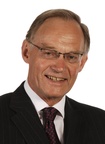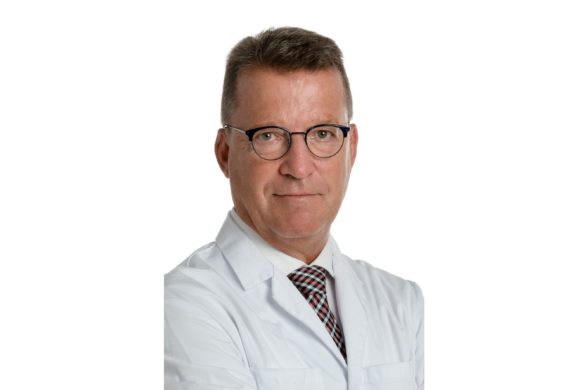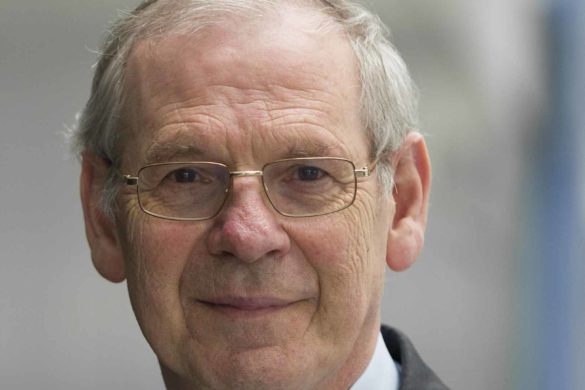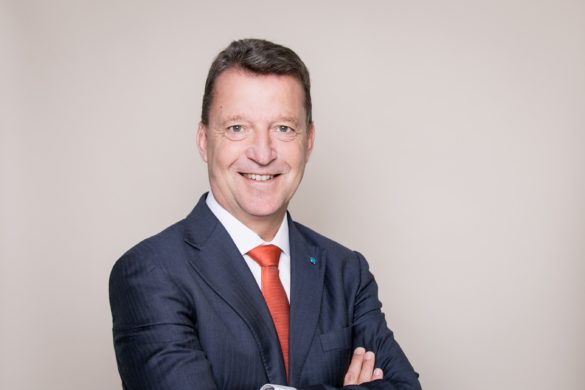The 16th EFNS Congress in Stockholm from 8th to 11th September was terrific, the largest congress we have ever had with 5400 participants and a packed programme of main topic lectures, focussed workshops, oral presentations and poster sessions covering the whole spectrum of neurology. The programme was organised in collaboration with the Movement Disorder Society and by the European Federation of Autonomic Societies. Singling out individual items is invidious but the highlight of every congress is the EFNS clinical lecture, this year eloquently given by Professor Marie-Germaine Bousser from Paris on CADASIL (cerebral autosomal dominant arteriopathy with subcortical infarcts and leukoencephalopathy). She told us about her first family with young onset stroke and migraine and cerebral white matter lesions. 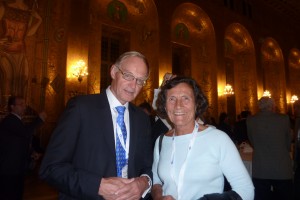 One member of the family wondered whether he had “the curse of the family”. She refused to accept a diagnosis of familial Binswanger’s disease because of the absence of hypertension and continued to search for the cause. This search led to the discovery of a mutation in the notch3 gene causing notched wings in fruit flies and coding for a transmembrane protein in the smooth muscle of small arteries in man. Research flowing from the clinical observation is widely relevant to migraine, lacunar stroke and subcortical dementia.Professor Bousser’s lessons, to admit when you don’t know the diagnosis and to listen to your patient, were received with thunderous applause.
One member of the family wondered whether he had “the curse of the family”. She refused to accept a diagnosis of familial Binswanger’s disease because of the absence of hypertension and continued to search for the cause. This search led to the discovery of a mutation in the notch3 gene causing notched wings in fruit flies and coding for a transmembrane protein in the smooth muscle of small arteries in man. Research flowing from the clinical observation is widely relevant to migraine, lacunar stroke and subcortical dementia.Professor Bousser’s lessons, to admit when you don’t know the diagnosis and to listen to your patient, were received with thunderous applause.
The City and County Councils of Stockholm generously hosted a reception for more than a thousand of the participants in the blue and gold halls in the City Hall where the Nobel Prize winners for Medicine or Physiology dine. The Nobel Prize web site is a rich source of information http://www.nobelprize.org/. There have been 199 Medicine or Physiology prize winners altogether of whom 34 have been neuroscientists. The first in 1906 were Santiago Ramón y Cajal and Camillo Golgi of histology fame. The most recent in 2004 were Richard Axel and Linda Buck from the USA: in 1991 they described the family of one thousand genes coding for odorant receptors, showed that each olfactory cell had only one and clarified their connections and signalling mechanisms. Since the congress was co-sponsored by the Movement Disorders Society European section and since we were hosted by the Swedish Neurological Society, to whom the warmest thanks, we note that one of the 2000 prize winners was Swedish, Arvid Carlsson. He showed that dopamine was concentrated in the movement centres of the brain: movements froze when dopamine was depleted and L-Dopa restored them, a discovery which benefits our patients every day. I had the good fortune to be a student in the laboratory of Sir Alan Hodgkin in Cambridge in 1963 when he won the prize using giant squid axons to discover the secrets of nerve conduction. I even recall the 1932 prize winner Lord Adrian, who described the “all or nothing response” in nerve discharges, prowling magisterially round our department in academic cap and gown when we were taking our examinations. The motto on the Nobel Prize for Medicine or Neurophysiology reads
“Inventas vitam juvat excoluisse per artes”
which is the second line of a quotation from Virgil’s Aeneid:
“Lo, God-loved poets, men who spake things worthy Phoebus’ heart;
and they who bettered life on earth by new-found mastery.”
Behind the scenes at the congress, the EFNS-ENS-EAN transition task force has continued to pave the way for the new European Academy of Neurology. Next year, from 21st to 26th September, we will hold the World Congress of Neurology in Vienna jointly with the World Federation of Neurology and the Austrian Neurological Society. In 2014 from 31 May – 4 June we will hold a joint EFNS-ENS Congress in Istanbul, Turkey. Thereafter will follow EAN congresses every June; Berlin in 2015, Copenhagen in 2016 and Amsterdam in 2017. An exciting prospect.

